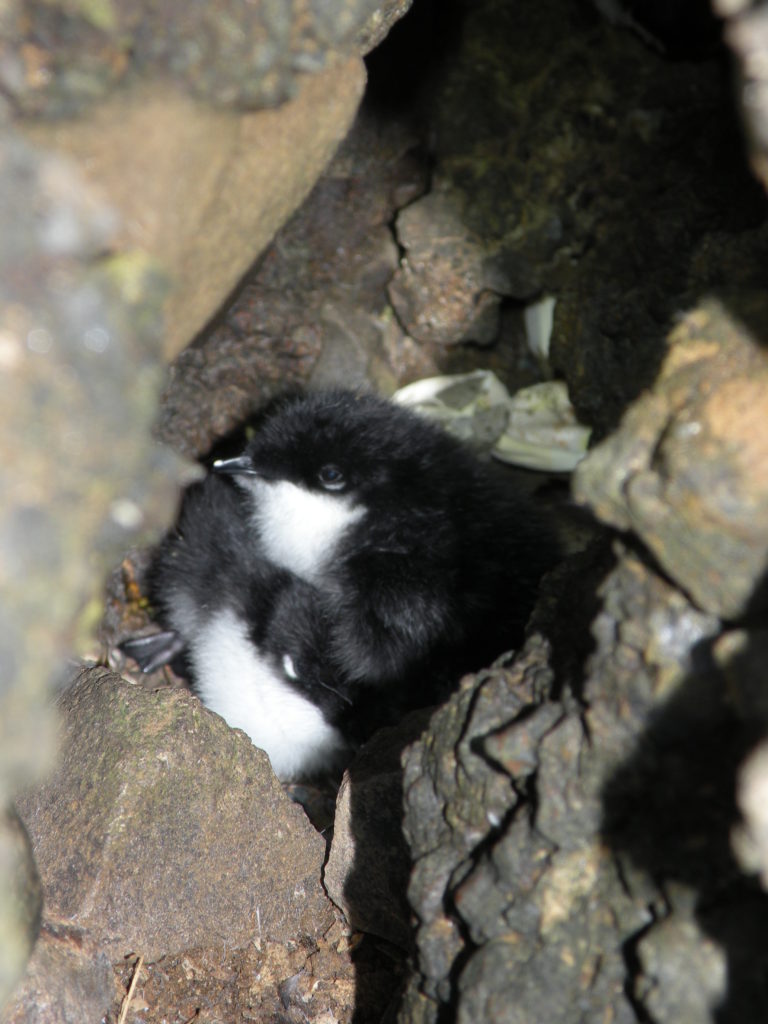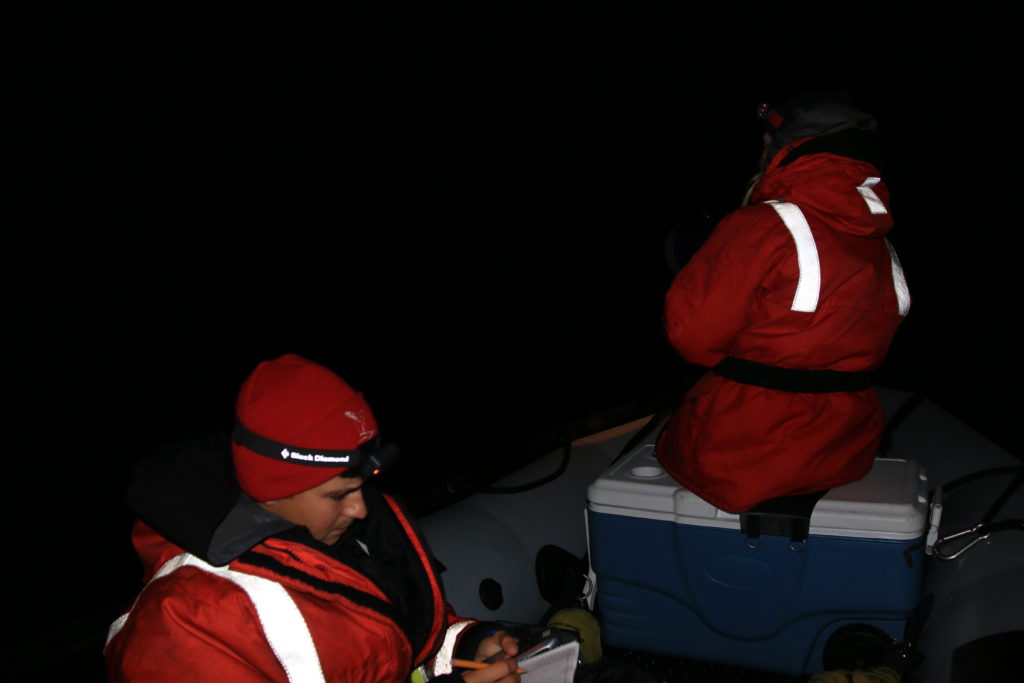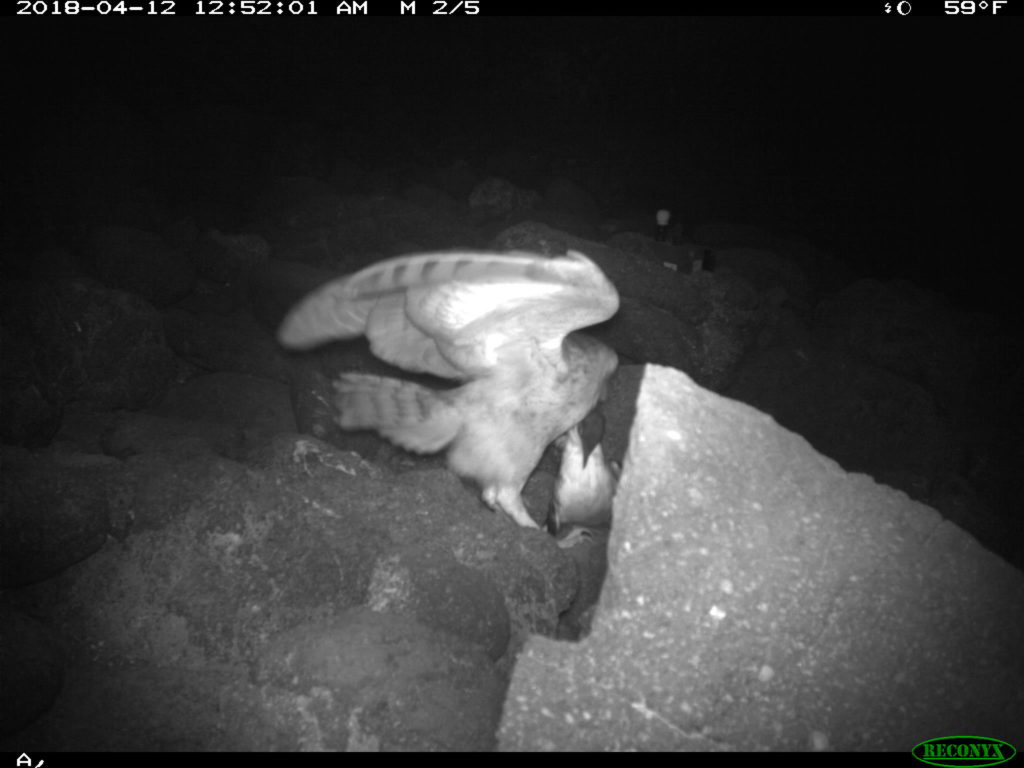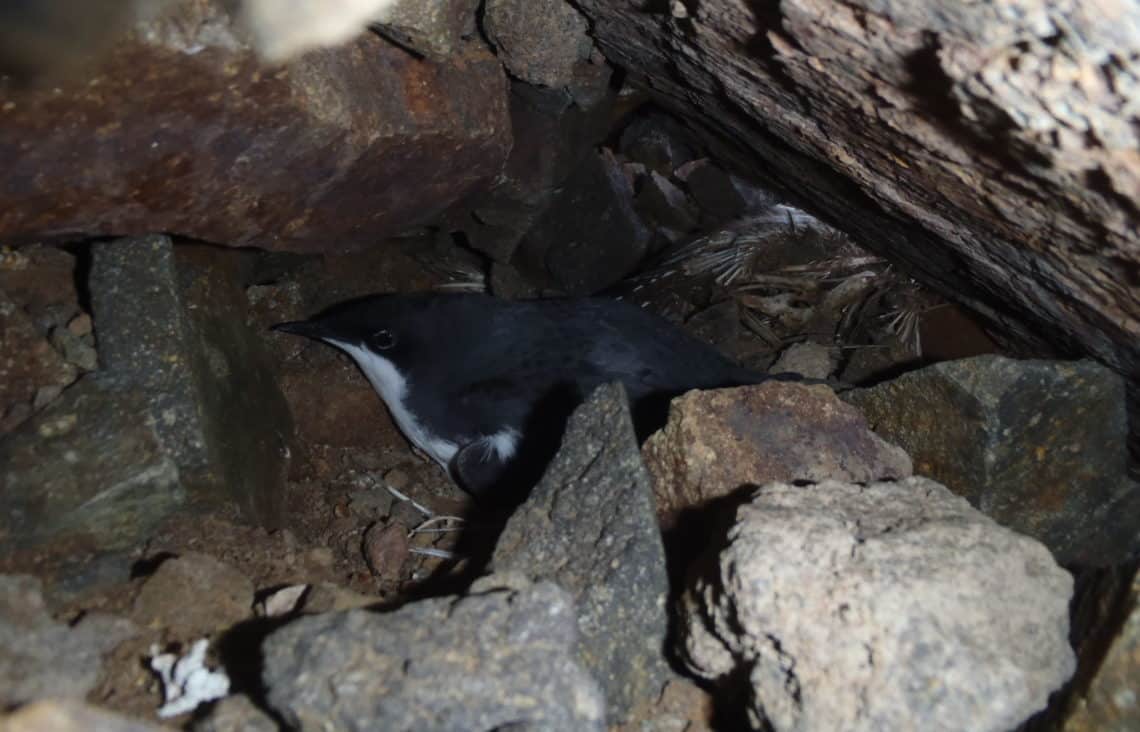By Amelia DuVall, Seabird and Habitat Restoration Ecologist, California Institute of Environmental Studies
On a foggy night in 1853, the SS Winfield Scott hit Anacapa Island going full speed. Its human passengers might not have been the only ones scrambling for the safety of the shore. First documented on the island in 1939, the black rat is a suspected stowaway, but no one knows for sure how they got there. Regardless, once introduced, they began to degrade the island’s ecosystem. One striking impact was the demise of a rare seabird, the Scripps’s Murrelet (Synthliboramphus scrippsi). Rats ate murrelet eggs, chicks, and even adults. Little is known about the murrelet population prior to the introduction of rats, but it’s undeniable that the rats reduced the population.
Research and monitoring in the 1990s showed that murrelets were still being heavily impacted by rat depredation. In 2001-2002, wildlife managers and biologists worked together to utilize mitigation funds from the 1990 American Trader oil spill settlement to eradicate black rats from Anacapa Island. Funds were also allocated to conduct pre- and post-eradication monitoring of Scripps’s Murrelets. For over a decade, the California Institute of Environmental Studies (CIES) and other collaborators have worked to document the recovery of this insular breeding seabird.

Several characteristics of the Scripps’s Murrelet make them unique, and also extremely difficult to monitor. Unlike a lot of well-known seabirds such as pelicans and gulls, the Scripps’s Murrelet spends very little time on land. They come ashore only to breed and make landfall in the cover of darkness. Their nests are hidden in rocky crevices and under shrubs, and are often inaccessible on steep cliffs. Within just two days of hatching, the tiny chicks head to sea with the parents, leaving little opportunity to spot the chicks in the nest. In order to track recovery, CIES biologists and other collaborators search sea caves, coves, and offshore rocks to find murrelet nests and determine hatching success. To avoid bias in only monitoring accessible nesting sites, researchers leveraged the social behaviors of murrelets to develop a method of estimating breeding population size. During the breeding season, murrelets will congregate on the water at night adjacent to their nesting colony. Using a high-intensity spotlight, researchers learned that they could circumnavigate the island in a skiff and count murrelets. These surveys, when repeated and conducted throughout the breeding season, provide an index for assessing murrelet colony size and population trends as well as indicate nesting distribution around the island.
Despite the recent uptick in island restoration programs that involve eradication of non-native mammalian predators to benefit seabirds, little data is available to show the post-eradication response of affected seabirds. The monitoring of Scripps’s Murrelets at Anacapa Island is one of the most robust eradication datasets available, resulting in compelling evidence of the benefits from non-native predator eradication for breeding seabirds. Post-eradication hatching success was nearly three times greater than observed during pre-eradication monitoring. Spotlight surveys showed similar increases with average counts increasing from approximately 130 murrelets in 2001 to over 400 murrelets in 2014. The success of the eradication project and other multi-partner efforts in the U.S. and Mexico contributed to the decision not to list Scripps’s Murrelets under the Endangered Species Act in 2016.

Recovery can be a slow process, and without baseline population numbers prior to black rat introduction, it’s difficult to pin down a population target to claim “full recovery.” An updated assessment was needed to see if murrelet population numbers were still increasing. In 2017, CIES received a grant from the Sonoran Joint Venture to conduct nest monitoring and spotlight surveys in 2018, along with support from the Montrose Settlements Restoration Program and Shanbrom Family Foundation. We also deployed automatic recording units (also known as song meters) to develop a vocalization baseline to help with future monitoring efforts and remote sensor cameras to document nest attendance and predation. The grant also allowed us to complete a baseline murrelet population assessment to evaluate the seabird habitat restoration work CIES started on East Anacapa Island in 2016.

The monitoring season is still underway, but so far we’ve seen above average incidents of native avian predation on murrelets. We’ve encountered eleven adult murrelet carcasses in our monitoring plots, as well as others around the island. Confirmed predators are Peregrine Falcons and Barn Owls, and Common Raven’s are suspected based on feather piles and raven activity captured on remote sensor cameras. Ravens are a major predator of another rare breeding seabird at the Channel Islands, the Ashy Storm-Petrel, and it’s concerning if they’ve also learned to seek out murrelet nesting sites.
Scripps’s Murrelets nest on only twelve islands in southern California and northwest Baja California and the entire world population is estimated at between 7,000 and 8,000 breeding pairs. Today, the murrelet is still listed as state threatened in California and federally endangered in Mexico. We hope to continue monitoring the Scripps’s murrelet at Anacapa Island in 2019 to build on the long-term dataset and put the 2018 results within a greater context. Continued monitoring will also provide important information about the potential impacts of native avian predators on the recovery of the murrelet population. Conservation needs for the murrelet include improving and expanding nesting habitat. We plan to restore another acre of seabird habitat at East Anacapa Island in Fall 2018, and we hope to find murrelets using the protective shrub cover for nesting soon.

